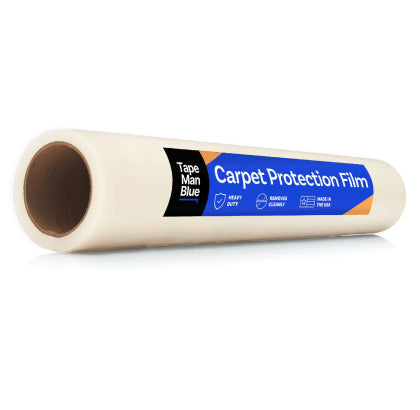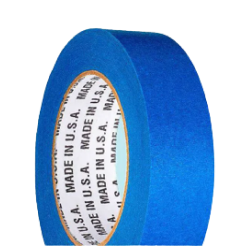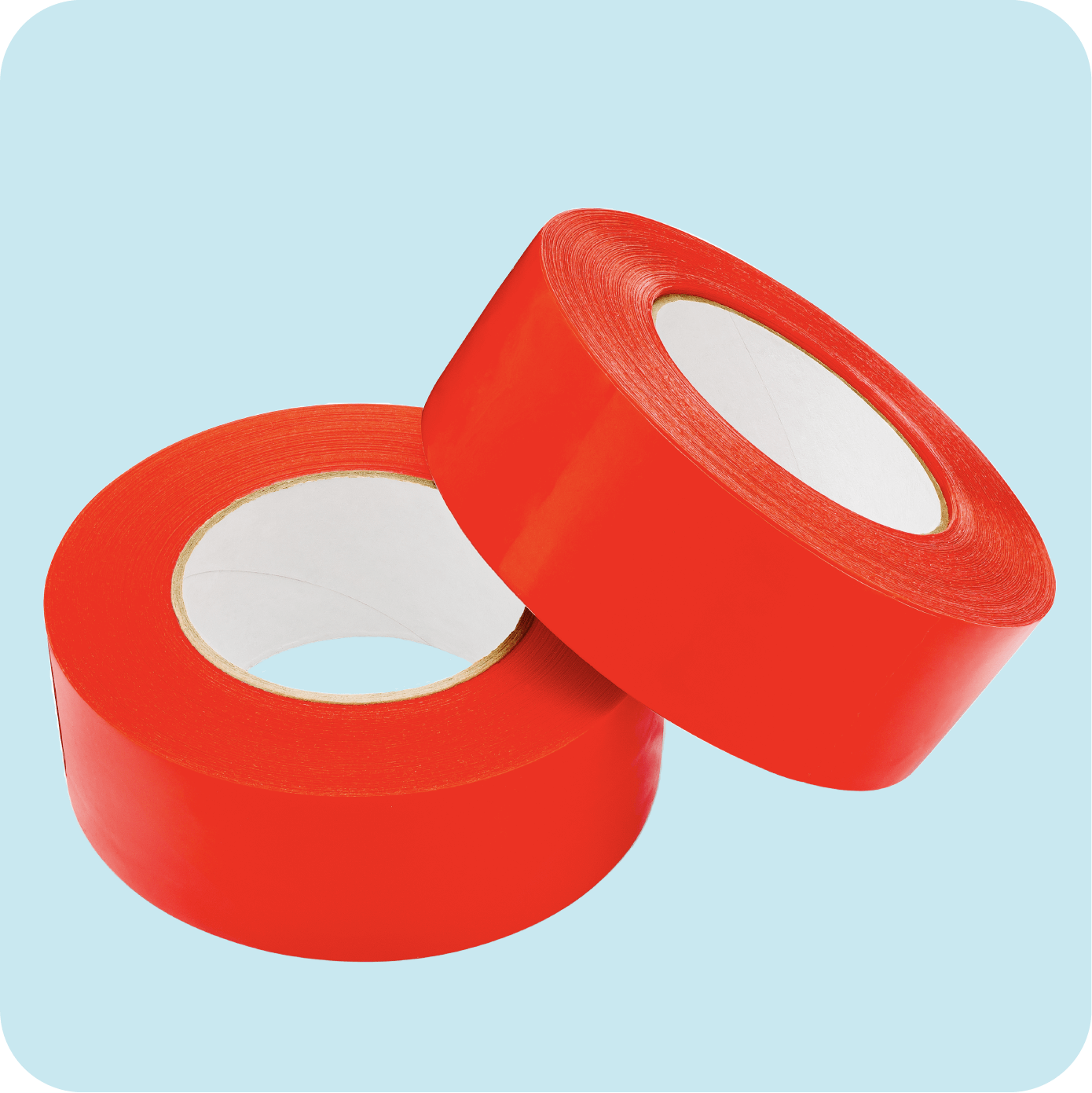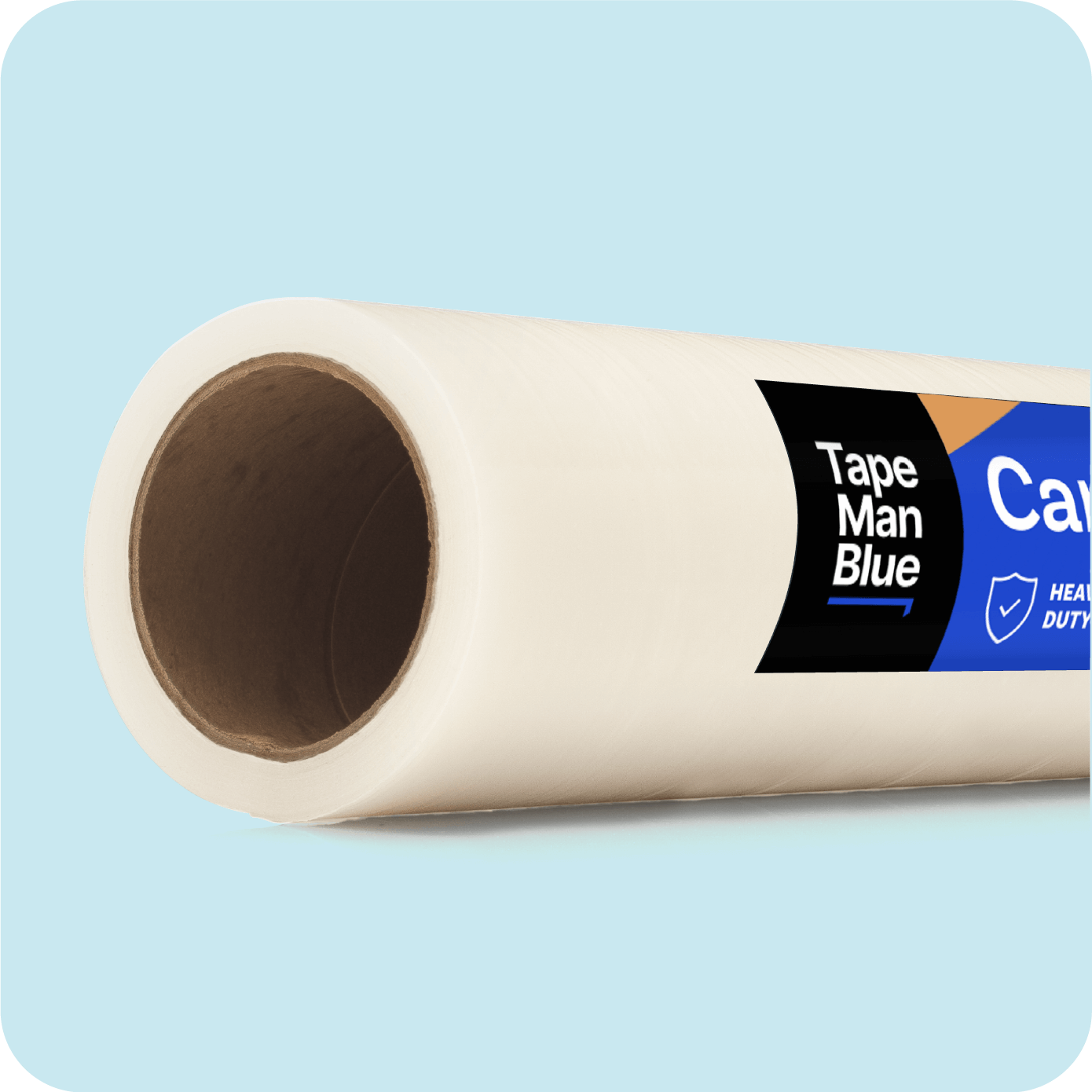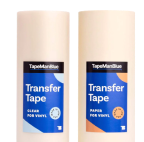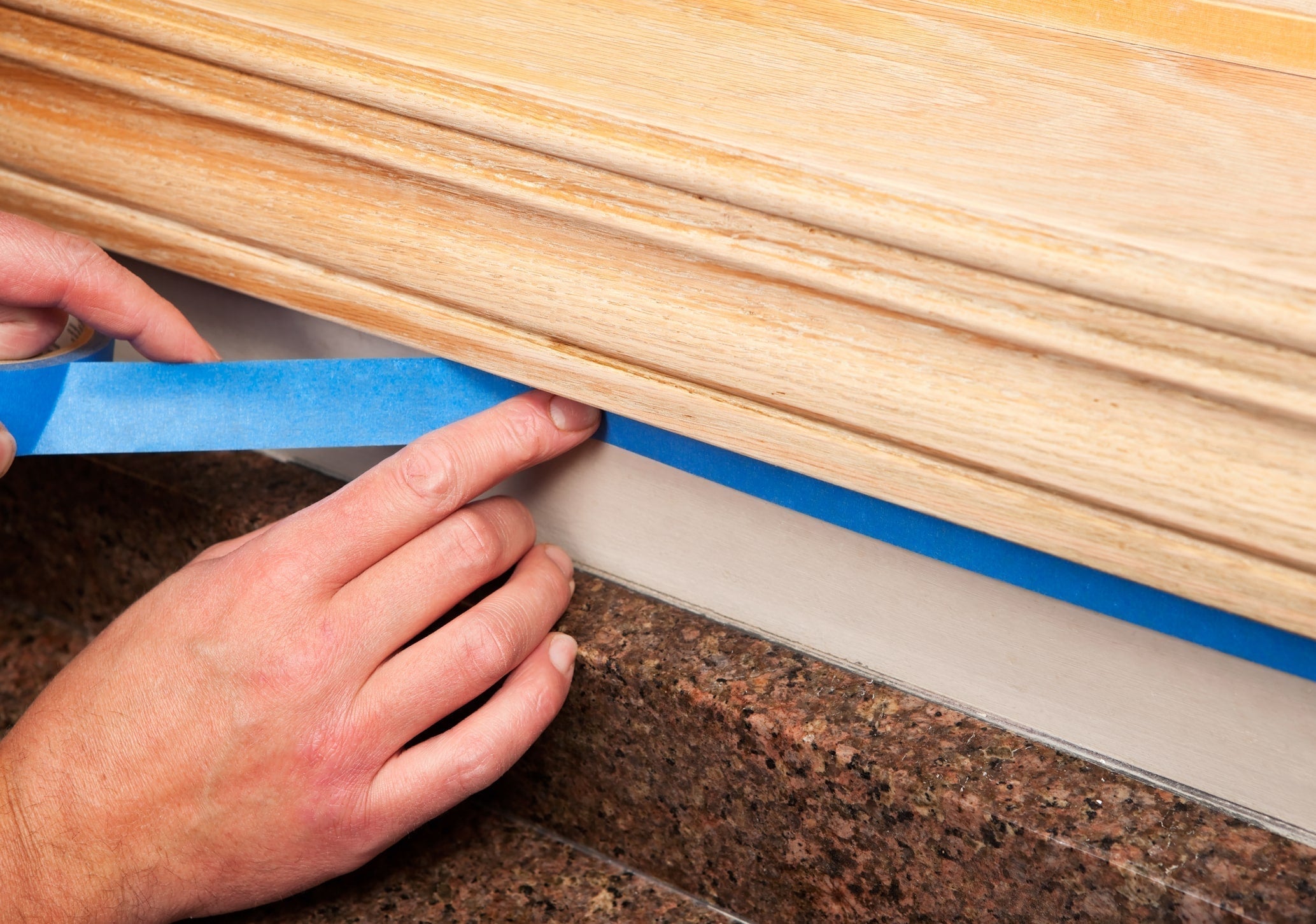
Moving can be a happy time celebrating change, such as a new job, an addition to the family or a change of scenery. However, moving comes with its own set of challenges. Whether you're moving for the first time or the tenth time, there are a lot of things to remember. While you may be caught up checking off your packing list, don't forget something that will make the moving process much more manageable — protecting your carpet and floors. The last thing you want to worry about as you're bringing in your heavy furniture and appliances is ruining your new floor. Consider the different types of flooring materials so you know how to protect them come move-in day.
The Most Common Types of Home Flooring Materials
Flooring can completely change the appearance of a space. The most common flooring options typically fall under one of four categories — carpet, hardwood, vinyl/linoleum or tile. Before you consider these different types of flooring, it's essential to picture them in your specific space so it matches your style, your home needs and your budget. You must also consider the benefits and drawbacks of each material.
Carpet
Carpet is a common flooring material that is most often found in bedrooms and some living rooms. It's not normally used in kitchens or bathrooms where it can get wet or stained. Carpet comes in a large selection of different colors and textures, so it's customizable to match your space. It also comes in a variety of different weaves. For carpet with extra durability, look for a high fiber density count per square inch.
Shop Carpet Protection FilmHardwood
Many people like hardwood flooring's sleek look in spaces like living rooms, but this flooring isn't for any areas prone to wetness or heavy traffic, like bathrooms, laundry rooms or sub-grade basements. This floor is typically made from cherry, walnut or oak, but it's not limited to those three options. Hardwood flooring may also come pre-finished, or it may need to be finished following installation for a smooth, shiny look.
Shop Hard Surface Protection Film
Vinyl/Linoleum
Vinyl and linoleum are both considered resilient flooring options and are best suited for areas in your home that get heavy foot traffic, like kitchens, dining rooms, bathrooms or mudrooms. Vinyl is available in various patterns and colors and is made from plastic. It can also vary in thickness. When creating vinyl flooring, the top wear layer is attached to a felt and foam layer. Vinyl flooring offers a stain and scratch-resistant surface on its top layer for extra protection. Linoleum is made with natural materials, so it is suitable for homeowners looking for an environmentally-friendly option. Installers glue linoleum to the floor in sheets, which are sometimes sealed in a protective coating to make it last longer.
Tile
Tile is a flooring material traditionally used in bathrooms but is now widely used in dining areas, kitchens, hallways, entryways and laundry rooms. For these high-traffic areas, you may even add an anti-slip finish on your tile flooring for extra safety. Tile is made with clay and shale that is hardened into ceramic, and it is available in a wide variety of colors and designs.
Tips for Protecting Your Floors When Moving Into a New Home
No matter the type of floor in your new home, you don't want to worry about scuffing it up while moving all your belongings. You must value your floor protection when moving, or you'll end up making a call to a carpet cleaner or having scratched up hardwood floors or dented tiles. Take preventative measures to protect your flooring before you start moving, so you can more efficiently and worry-free. Here are a few ways you can protect carpet and floors when moving into a new home.

1. Make Sure You Measure
There's a lot to remember when you're moving to a new home, so it can be easy to overlook some things. However, don't forget to measure. You should always measure before moving into your new home to ensure your furniture and other belongings will all fit correctly in your new space. If you forget to measure and bring in a huge couch that may not fit, for example, you risk scratching up the floors.
If you're trying to squeeze furniture in through the doorway, it can be easy to accidentally drop something and damage the floor that way as well. Always measure the size of the rooms in your new home, your doorways and your furniture for a smooth move without scraped up floors.
Shop Floor Protection Film2. Carry Items When Possible
One of the best ways to ensure your floors stay safe during moving day is to carry as many of your belongings as possible, rather than sliding them across the floor. For boxes of light belongings, make the trips and carry all that you can comfortably transport to avoid floor contact altogether. It can be tempting at the end of the long day to drag or slide heavy belongings along your floor, but it's vital to avoid doing this since it may result in scratches, dents or broken tiles on your floor.
Understandably, you won't be able to carry all of your belongings inside. Another tip to protect your flooring when moving heavy furniture you can't carry is to consider using a dolly with rubber wheels or furniture sliders. If you choose to use a dolly, make sure your heavy pieces are secured using ropes or straps so they don't fall and damage the floor.
Many homeowners also opt for furniture sliders for items like dining room tables, chair legs or desks. Sliders come in a variety of sizes and shapes and are sturdy, flat pieces of plastic with fitted hard rubber to decrease the amount of friction between the bulky item and the floor, or even eliminate the friction completely. They go under each leg of the thing you're moving, which allows it to slide across the floor safely to avoid damage. When using sliders, be sure to push your items rather than pull them.
Shop Carpet Protection Film3. Use Floor Protection Film
Another method of temporary floor protection during construction and moving is floor protection film. This polyethylene film is coated with a removable adhesive that stays securely in place once it's down. It sticks edge to edge and gets rid of any creasing to eliminate the tripping hazard. The film is resistant to any tears or punctures from any tools, heeled shoes or other sharp objects that come in contact with it, making it ideal for putting down before moving furniture. You can also leave floor protection film on for up to 45 days for a clean removal that still won't damage your floor.
Many people like to use floor protection film instead of traditional drop cloths since the film is easy and efficient to apply and offers the same level of protection. While this film is an excellent example of how to protect wood floors when moving, you can use floor protection film on any other hard flooring surfaces, like linoleum, as well. It's available in four different sizes, so you can get what works best for you. This self-adhesive floor protection tape also shields your floor from any dirt while people are walking on it, moisture and any other debris.
Shop Floor Protection Film4. Use Carpet Protection Film
It can be tricky and time-consuming to clean and remove dirt from the carpet, especially while moving into a new home. To save yourself the hassle of stopping and scrubbing, protect carpets when moving by using carpet protection film. The film is transparent and self-adhesive, and once it's down, it's down. Carpet protection film doesn't budge and is flexible, so it can protect carpets from dirt, dust, foot traffic, spills or any leftover construction debris. Plus, when you're not worried about ruining your carpet, you can move more efficiently during the moving process.
Like floor protection film, the carpet protection film is safe to stay on your carpet for up to 45 days and doesn't leave any sticky residue behind after removal. The film is simple to use and much more user-friendly than plastic tarps, drop cloths or other carpet protection tapes that don't stick to your carpet. Have some extra peace of mind knowing carpet protection film is there to protect your carpet from it all.
Shop Carpet Protection Film5. Protect Floors and Carpet With Plywood
If you have a larger budget to work with and floor protection is of the utmost importance, plywood sheets are an excellent method to prevent floor damage when moving into a new home. But what makes plywood worth the bit of extra money? Plywood sheets act as a second floor over your current flooring in your new home. However, plywood should not be used as furniture sliders in any circumstance.
Because the plywood truly serves as another floor, any damage that occurs during the moving process — scratches, dents or scrapes — happens on the plywood, not on your actual floor. Once you get everything completely moved into your new home, you can remove the plywood sheets and reveal your beautiful floors.
Shop TapeManBlue for Floor and Carpet Protection Film Before You Move
Moving doesn't have to be complicated. Shop TapeManBlue for all of the materials necessary to protect your floor on move-in day. We've been offering floor cover rolls for your floor and carpet protection needs that remain unmatched in both quality and affordability. These protective films go on smoothly, wherever you need them, and come off effortlessly, leaving no trace. TapeManBlue offers everyday low pricing, including free shipping on all orders, so you can get your film in time to move. Plus, we make all of our products in the U.S. for guaranteed quality that is sure to exceed your standards. Start shopping or contact us today for a stress-free moving experience.
Shop Carpet Protection Film Shop Floor Protection FilmSources:
- https://www.homestratosphere.com/flooring-types/
- https://www.thebalancesmb.com/recommended-flooring-types-844656
- https://www.wideplankflooring.com/blog/4-tips-for-protecting-your-hardwood-floors-during-a-move/
- https://www.mymovingreviews.com/move/protect-floors-when-moving/
- https://www.upack.com/articles/how-to-protect-your-floors-during-a-move
- https://www.movinglabor.com/blog/how-to-protect-your-floors-and-carpet-on-moving-day
- https://sebringdesignbuild.com/your-guide-to-temporary-floor-protection-during-construction/

